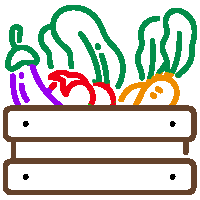Приказ основних података о документу
Use and Agroecology Efficiency оf Medicinal Plants in Plant Production
| dc.creator | Filipović, Vladimir | |
| dc.creator | Ugrenović, Vladan | |
| dc.creator | Popović, Vera | |
| dc.creator | Popović, Slobodan | |
| dc.creator | Mrđan, Snežana | |
| dc.creator | Dragumilo, Ana | |
| dc.creator | Ugrinović, Milan | |
| dc.date.accessioned | 2022-12-07T11:23:01Z | |
| dc.date.available | 2022-12-07T11:23:01Z | |
| dc.date.issued | 2021 | |
| dc.identifier.isbn | 978-1-68507-147-9 | |
| dc.identifier.uri | http://RIVeC.institut-palanka.rs/handle/123456789/560 | |
| dc.description.abstract | In addition to the well-known use of medicinal plants in traditional (popular) and official (modern) medicine, medicinal plants are increasingly used in the very production of plants. More specifically, at the beginning of the twentieth century, with the introduction of hitherto unknown production methods (biodynamic and organic), the activities concerning the use of this type of plants were intensified in various types of plant production (arable, vegetable, fruit and viticultural and other), as well as in the production of various plant nutrition and plant protection products, of compost and similar products. In this paper discusses the use of a certain portion of medicinal plant species, the ones which are predominantly used in biodynamic and organic production. The first part of the paper presents some of the most used medicinal plant species used for this purpose: stinging nettle (Urtica dioica L.), comfrey (Symphytum officinale Wallwort), dandelion (Taraxacum officinalis Weber), garlic (Allium sativum L.), horsetail (Equisetum arvense L.), chamomile (Chamomilla recutita (L.) Rausch.), tansy (Tanacetum vulgare L.), yarrow (Achillea millefolium L.), pot marigold (Calendula officinalis L.), valerian (Valeriana officinalis L.), marigolds (Tagetes sp.) and burdock (Arctium lappa L.). As different organs are used from these species, the time of the harvesting (picking) of these species is of great importance. The most suitable picking moment is from the beginning until the full blossom phase, because during this period, the listed species are the richest in their typical active substances, microand macro elements. The second part briefly explains how and by what means the listed species are used in biodynamic and organic production, how and in which manner to prepare by some of the recipes for the making of individual preparations, as well as what their purpose is in plant nutrition, plant protection and/or the preparation of compost. | sr |
| dc.language.iso | en | sr |
| dc.publisher | Nova Science Publishers | sr |
| dc.relation | info:eu-repo/grantAgreement/MESTD/inst-2020/200003/RS// | sr |
| dc.relation | info:eu-repo/grantAgreement/MESTD/inst-2020/200011/RS// | sr |
| dc.relation | info:eu-repo/grantAgreement/MESTD/inst-2020/200032/RS// | sr |
| dc.relation | info:eu-repo/grantAgreement/EC/H2020/773554/EU// | sr |
| dc.rights | restrictedAccess | sr |
| dc.source | An Introduction to Medicinal Herbs | sr |
| dc.subject | medicinal plants | sr |
| dc.subject | plant production | sr |
| dc.subject | biodynamic and organic production methods | sr |
| dc.subject | preparations | sr |
| dc.subject | plant nutrition and plant protection products | sr |
| dc.subject | compost | sr |
| dc.title | Use and Agroecology Efficiency оf Medicinal Plants in Plant Production | sr |
| dc.type | bookPart | sr |
| dc.rights.license | ARR | sr |
| dc.rights.holder | Nova Science Publishers | sr |
| dc.citation.epage | 61 | |
| dc.citation.spage | 17 | |
| dc.identifier.doi | 10.52305/TKAL3430 | |
| dc.identifier.scopus | 2-s2.0-85125613809 | |
| dc.type.version | publishedVersion | sr |


